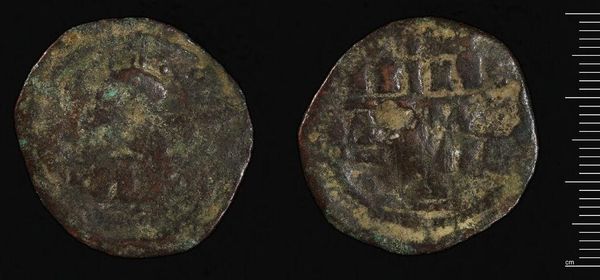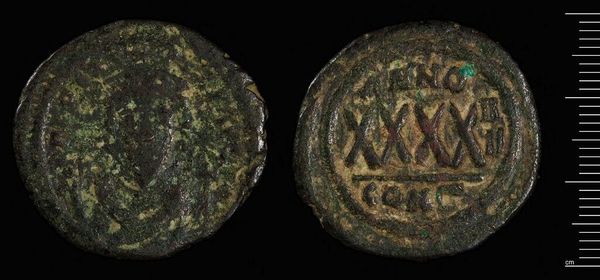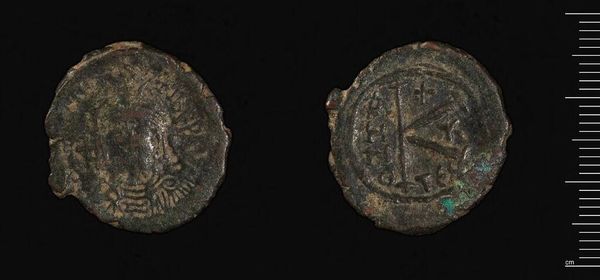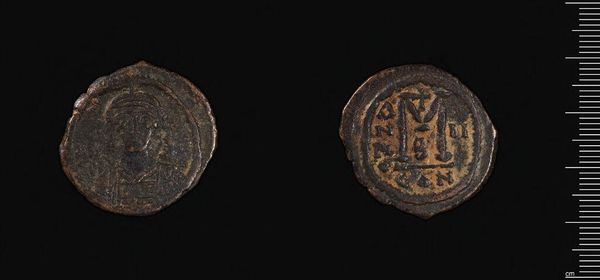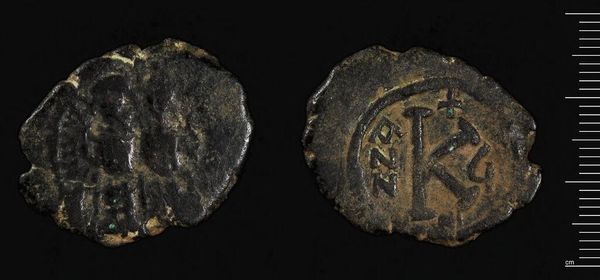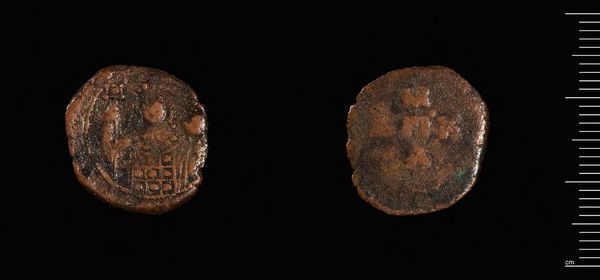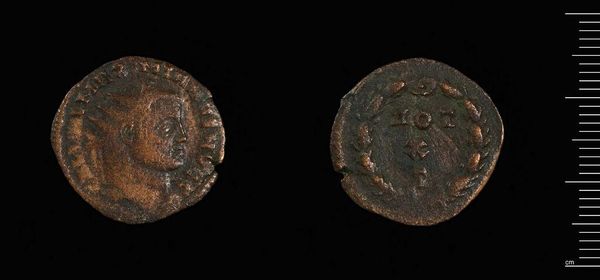
Dimensions: 12.32 g
Copyright: CC0 1.0
Curator: Looking at this coin, its dark patina and worn details evoke a sense of history, almost a tangible link to the past. Editor: Indeed. This is a Follis of Tiberius II, from Constantinople. Examining such coins offers insights into the Byzantine Empire's political and economic landscape. Curator: And how the leader's image was curated and disseminated. Consider the power dynamic inherent in using the emperor's likeness on currency, controlling the narrative and projecting authority. Editor: Absolutely. The coin itself served a very public role. Minted in Constantinople, its design, weight, and distribution reflect imperial policies and the management of state resources. Curator: Even in its deteriorated state, the imagery speaks volumes about societal values and power structures. There's something inherently political about imprinting symbols of authority onto everyday objects. Editor: Right. It's a small object, yet its impact on the lives of people within the Byzantine Empire was considerable. The history embedded in this small piece is truly remarkable. Curator: It makes you consider the relationship between art, power, and societal control. Editor: Precisely, it underlines how artifacts like this are invaluable for understanding the past.
Comments
No comments
Be the first to comment and join the conversation on the ultimate creative platform.

